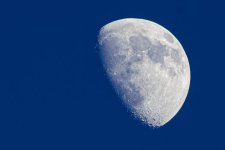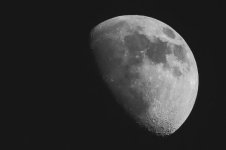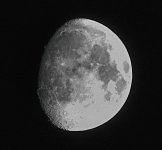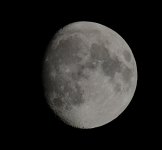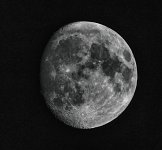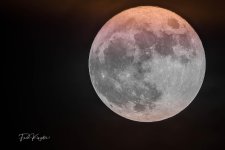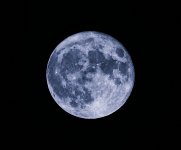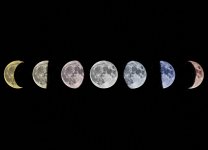Like to ask a question here, moon-related and Z6ii Z7ii-related, but if not allowed, please move to the right place.
See quite a few members use Z cameras here. We know the subject tracking function in these high-end Z cameras is used to track a moving subject (in the frame) for remaining in focus (AF). Now Moon moves all the time and for the handheld situation, both Moon and camera, say, all move a bit, will the subject tracking function still work to make a sharp image? i.e., does the subject tracking function also cover the movement of the camera? Like to hear and appreciate all comments. Tks
Subject tracking, 3D-tracking, any sort of tracking is irrelevant zoomed into the moon with a long telephoto. Your focus is infinity. You should be on manual focus, pre-set the focus using a bright star. You zoom the Live-View image on the screen as much as it goes and then manually adjust the focus until the star is as small as possible on the screen. Adjust the exposure lower if you need to see the adjustment better. Without touching focus you can then move the camera on the moon. No matter where you stand or how you move, at least the focus is correct.
As far as the rest of the business of doing the photo hand-held with VR, it will never be as sharp as on a steady tripod with a head that can hold the load of the camera and lens with no shake. You might match the performance of a cheaper and shaky tripod. If you really break out in an itchy rash at the thought of a tripod, at least try to set the rig down on a table and prop-up the lens with some books or something to aim at the moon. Turn off VR and use the self-timer to take out the shake of you pressing the shutter release button.
My extra tips: If you have a Z5, it takes the same wired remote shutter release as the D750 and several other DSLR bodies. The aftermarket versions of the remote shutter are dirt-cheap, like $10-$15. I've used the same one for over 10 years. on 4 different camera bodies. I have spent more on lens cleaning cloths. Otherwise use that phone app with a bluetooth or wi-fi connection to activate the shutter. I find just plugging in the remote switch to be faster and less fiddly.
You can do this in 1 exposure. Take many photos and try to bracket the exposure to dial in the right detail. You will have to keep moving the aim while on the tripod, try to set it so the moon moves across the full screen.
Exposure stack 30-50 images taken from an extra-steady platform, and you will marvel at the detail that will show. The atmosphere distortion will average out, you will multiply the effective pixel-count of your sensor because of the tiny shifts between images will fill the gaps in pixels and average them out. And that sensor noise will disappear. Software that does this exposure stacking is freely available and regularly used by astronomers. SIRIL will do this well. Next best for a planetary body is Registax (but that has not been updated in about 10 years).
Next, Fred Kingston inspired me into this but infrared imaging has a better potential to cut through atmospheric haze in the sky. My next time I make a project of photographing the moon, I will take my longest telephoto, use the IR D600 body I have, and most likely mount on my motorized star-tracker so I won't keep readjusting aim. When I desaturate to B/W, it will look the same color as a normal color moon desaturated.

